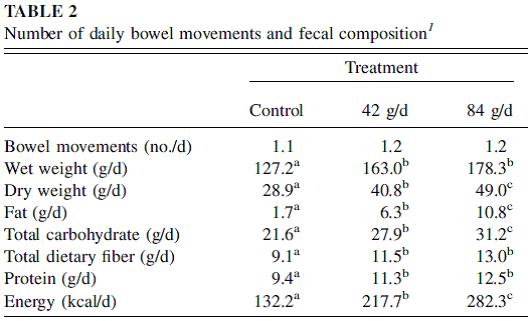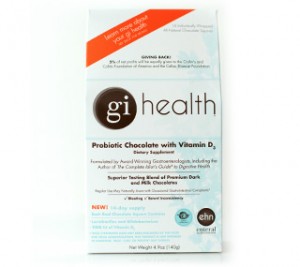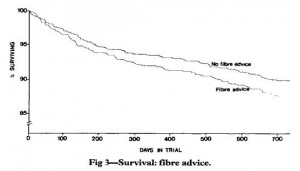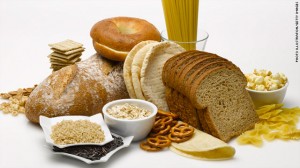Non-sequiter nutrition: Atwater’s almonds, et al., Op. 87
Almonds have been considered a super-food for as long as I can remember. And in accord with my level of interest in super-foods, I’ve never cared. Today, however, almonds became interesting.  One small serving of almonds (1 ounce or 28 grams) provide ~171 kilocalories (alternatively, 100 calorie packs
One small serving of almonds (1 ounce or 28 grams) provide ~171 kilocalories (alternatively, 100 calorie packs have, well, 100 kilocalories). This measurement of a food’s energy content takes into account the amount of heat produced when it is electrocuted in a bomb calorimeter as well as its digestibility. The importance of taking both of those things into consideration? Marshmallows and tree bark produce a lot of heat when they burn. Unlike marshmallows, however, a tree bark smoothie wouldn’t give us any energy because we can’t digest wood. This is further complicated because digestibility of a food consumed by itself can differ when it’s eaten with a meal.
Usually, and unlike carbs and protein, the digestibility of fat is impeccably high and unvarying. Almond oil, however, might be an exception in more ways than one.
Discrepancy between the Atwater factor predicted and empirically measured energy values of almonds in human diets (Novotny et al., 2012)
This was a ridiculously complicated study designed to determine the calories in almonds. It was a three-way crossover with 18-day feedings of 0, 42, or 84 grams of almonds per day (0, 1.5, or 3 ounces per day). The researchers gave the volunteers ALL of their food for the entire study, and in exchange, the volunteers gave the researchers the byproducts (urine, feces) for the second half of each feeding period. This is already an expensive and extremely labor-intensive study, but I think they were trying to do more than just quantify the calories in almonds; I think they were trying to stick-it-to-the-man.
N.B. the almonds were eaten with normal meals. The diet was normal. There are no tricks up my or the researcher’s sleeves. And I’m honestly fascinated by Table 2.
1.5 servings of almonds (42 grams) had a phenomenal effect on food digestibility. And 3 servings doubled the amount of non-absorbed calories. In the beginning of the post I noted that a serving of almonds had 171 kilocalories. But a serving of almonds increases the non-absorbed kilocalories by about 50. So does this mean we should re-assign a serving of almonds to 121 kcal?
Yes, the authors decided; and I agree. And I think this sticks-it-to-the-man. Perhaps this is the source of almond weight loss lore (?)… imagine the fastidious dieter who weighs out 3 servings of almonds for their daily snack, accounts for the 513 kilocalories in their food diary (but is really only getting 357 kilocalories), and they lose weight… and those 100 calorie packs only have 68 calories. Ha!
OK, but just out of curiosity which calories aren’t absorbed? Are almond calories poorly absorbed, or do almonds block the absorption of other nutrients?
From Table 3, it’s probably fat. Combined with earlier findings from Ellis, it’s probably almond fat that was trapped inside delicious and crunchy cell walls (Ellis et al., 2004).
In brief, Ellis measured almond fat after three treatments:
1) Mechanically crushing the almonds
2) Chewing the almonds (and measuring spit-out almond fat)
3) Eating the almonds (… and measuring accessible fecal almond fat)
The first two methods didn’t release a lot of almond fat, but the third did, by a little. As opposed to crushing or chewing, after actual digestion, gut microbes degrade the crunchy cell walls to release the almond fat contained therein. Unfortunately, however, fat absorption is very inefficient in the large intestine (where this is all happening), which is why the almond fat is either fermented or excreted.
So at this point we’ve got more fat, but also more carbs and fiber from the almond cellular structures making their way into the large intestine (on a high almond diet)… what do the resident microbes have to say about all of this?
A lot, according to a series of studies by Mandalari and his robotic gut simulator (Mandalari et al., 2008).
Unless you are seriously constipated, the bacterial changes after 24 hours of fermentation are irrelevant. Looking at 8 hours, which is probably more physiologically relevant, gives us this: FOS, fructooligosaccharides; FG, finely ground almonds; DG, defatted finely ground almonds.
FOS, fructooligosaccharides; FG, finely ground almonds; DG, defatted finely ground almonds.
Table 2 (above) is, in a word, perplexing. Whether or not Mandalari set out to stick-it-to-the-man, he sure did (unless that is just a thing with almonds [?]). Similar to FOS, almonds had a relatively potent bifidogenic effect. This is not surprising because of almond’s high fiber content. What was surprising, however, was that this is completely absent in defatted almonds. The fiber is the same in almonds and defatted almonds, therefore there is something uniquely magical about almond fat and the long series of unfortunate unlikely events that must occur in order for the bifidogenic effects of almonds to manifest.
The unlikely events: the almond fat must first be protected during chewing and digestion, otherwise it would be absorbed in the small intestine, before it made it all the way to the more “microbial” large intestine. This is accomplished by almond’s robust cell walls. Almond fat needs to be released in the large intestine; this requires microbes and is therefore less likely to occur in the small intestine (where microbes are less abundant; if there were more microbes in the small intestine, the almond fat would be released and absorbed before it made it into the large intestine). The almond fat needs to be not absorbed in the large intestine so it can exert its bifidogenic effect; this happens because the large intestine is inherently poor at fat absorption. Everything must be exactly in place (kind-of-like in M. Night Shyamalan’s “Signs”): almond’s cellular structure, the intestine’s region-specific digestive enzymes, microbial geography, differential fat absorption capacity, etc., etc. It’s like an astrological event that occurs once every million years.
***
Back to the Novotny (Atwater) study for a moment. 48 grams (1.5 servings) of almonds only provide about 5 grams of fiber, but it increased stool weight by almost half. Fiber is known to increase “regularity,” but the effect of almonds is pharmacologically disproportionate to it’s fiber content.
According to a review by Ahmad (2010), almond oil improves bowel transit time and reduces the symptoms of irritable bowel syndrome. Not whole almonds. Not almond fiber. Almond oil. And injecting it might even cure IBS (don’t try this at home; Sasaki et al., 2004).
Is it time for a paradigm switch? Will almond oil open the door for other fats to be researched for bona fide prebiotic properties, akin to inulin and GOS
?
Indeed, almonds became interesting today.
Check out my Patreon campaign! Five bucks a month for full access and there are many other options. It’s ad-free and you can cancel if it sucks 🙂
Consults are open, contact me if you’re interested: drlagakos@gmail.com
Affiliate links: join Binance and get some cryptoassets or download Honeyminer and get some Bitcoins for free! And now you can mine Bitcoin from your Chromebook!
Still looking for a pair of hot blue blockers? Carbonshade and TrueDark are offering 15% off with the coupon code LAGAKOS and Spectra479 is offering 15% off HERE. If you have no idea what I’m talking about, read this then this.
20% off some delish stocks and broths from Kettle and Fire HERE.
If you want the benefits of ‘shrooms but don’t like eating them, Real Mushrooms makes great extracts. 10% off with coupon code LAGAKOS. I recommend Lion’s Mane for the brain and Reishi for everything else.
Join Earn.com with this link.
Start your OWN Patreon campaign!











